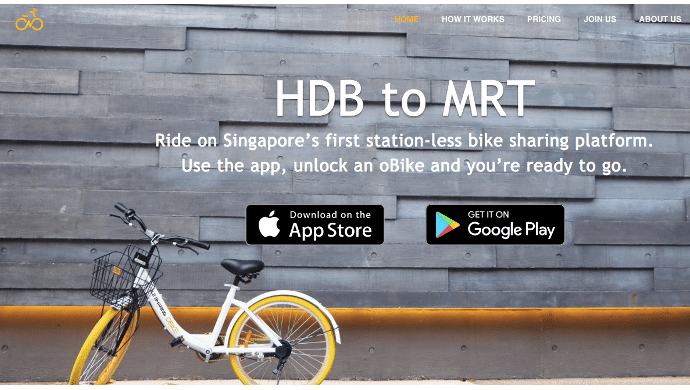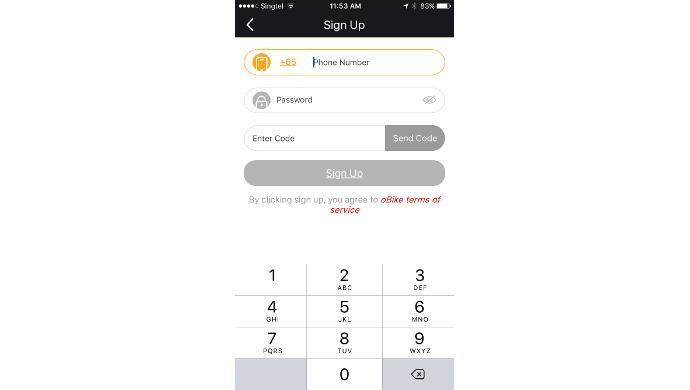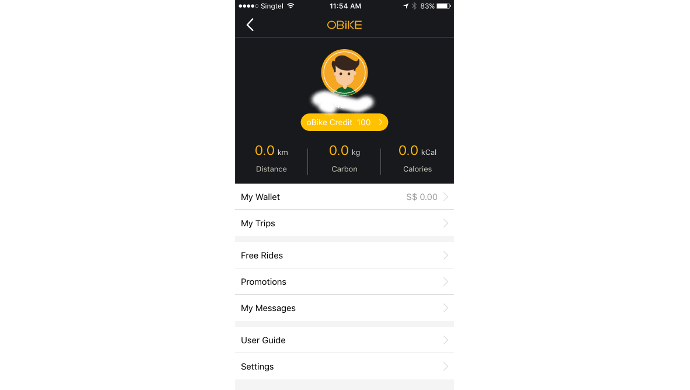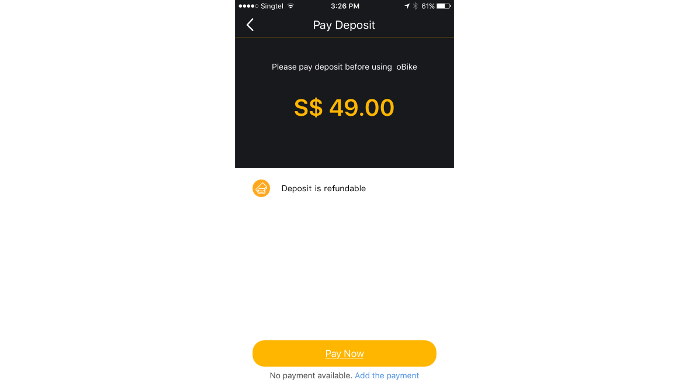For a dollar, you can ride oBike’s bicycle for 30 minutes
Last year, Chinese bike-sharing startup Mobike announced it was eyeing a launch in Singapore by the end of 2016. And while it has already been test trialling its service and has set up a Singapore website, Mobike has not officially began operations in the country.
Now, a Singapore-based bike-sharing startup with a suspiciously similar-sounding name, oBike, has quietly beat the Chinese company to the punch. e27 did a little search and found two designated public bike parking areas with an oBike in the vicinity of our office. Here’s how you can use one.
First, you need to register an account using your mobile phone number and a password. A unique code will then be sent to your phone for authentication.
oBike tracks the total distance logged by your usage. It also measures how much carbon footprint is reduced, as well as the total calories burnt through your cycling habits — a plus point for the eco- and health-conscious rider.
Riders can earn a S$3 (US$2.10) ride coupon for every friend they invite as soon as they complete their first ride. The invited friend will also receive the ride coupon once they sign up via the invite.
Before you book an oBike, you need to have place a refundable deposit of S$49 (US$35) and top up the mobile wallet. Payment methods include PayPal and credit/debit cards. oBike’s rental fee is S$1.0o (US$0.70) for every 30 minutes.
oBike has integrated Google Maps into the app so you can easily identify all the oBike locations. Once you have selected an oBike, the map displays the distance between you and the bike and how long it would take for you to walk there.
And behold! oBike’s workhorse bike for the everyday commuter.

For interested riders who have yet to download the app, there is an instruction sheet placed in the front basket of every oBike.
Also Read: Are China’s bike-sharing platform really part of the sharing economy?
The oBikes are locked with an electronic clamp on the back wheel. To unlock it, you need to use the app’s inbuilt QR code reader and scan the QR codes on the bike. The QR codes are placed on a few parts of the bike for easy access.
Like credit card holders, every oBike user has a credit score. The purpose of it, according to oBike’s FAQ, “is used to encourage positive riding and responsible behaviour, and strongly reprimand the wrong ones.” It is not known whether these points can be converted to any monetary value.
Some offences that would hurt your credit score include parking in the wrong area, forgetting to lock the bike, adding your own lock, violating traffic rules or losing the bike.
Acts that would increase your credit score include completing a ride, reporting a broken bike, or reporting a wrongly parked bike.
Also Read: More than a bubble: A breakdown in the sudden boom of bike-sharing services in China
Will bike-sharing take off in Singapore?
The bike-sharing ecosystem is massive in China, but with its widespread use comes widespread misuse including theft, sabotage and improper parking. Hopefully, such problems would not impede the growth of bike-sharing in Singapore. The problems that Singapore cyclists are concerned now have more to do with congested roads and pavements, which are hazardous for cyclists. But with Singapore government looking to develop a National Cycling Plan that would see the establishment of bicycle-friendly routes, bike-sharing in the Republic may have a bright future.
—-
The post In Pics: Bike-sharing quietly starts rolling in Singapore appeared first on e27.







